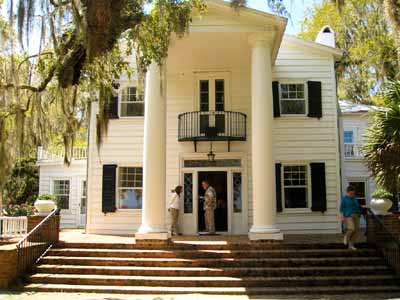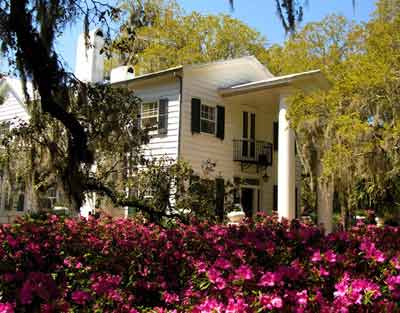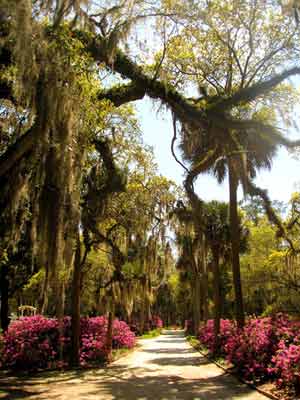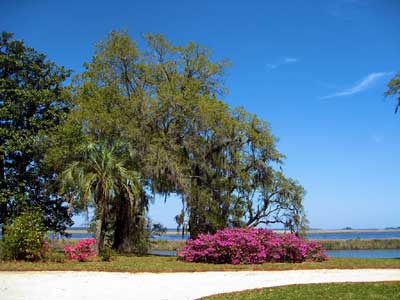Estherville Plantation – Sampit River – Georgetown County
Basic Information
- Location – Sampit River, Georgetown, Georgetown County
- Origin of name – Named by Andrew Johnston in honor of his mother Esther Allston Johnston or perhaps his daughter Esther Ainslie Johnston Withers (2, III: 13) (4, p. 575) (5)
- Other names – ?
- Current status – ?
Timeline
- 1711 – Earliest known date of existence (4, p. 575)
Landgrave Robert Daniell received a claim for 24,000 acres that became Winyah Barony, also called Smith's Barony (4, p. 575).
- 1711 – The day after receiving the claim Landgrave Daniell conveyed the property to Thomas Smith (4, p. 575).
- 1738 – Thomas Smith died and his will divided his barony among his children and grandchildren. It seems his son Thomas Smith II inherited the section that Estherville Plantation would be developed on (4, p. 575).
- ? – Robert Smith, the son of Thomas Smith II, acquired the property (4, p. 575).
- After 1786 – Robert Smith sold the land to Andrew Johnston (4, p. 575-576).
- ? – House built by Andrew Johnston (4, p. 576).
- 1795 – William Andrew Johnston inherited Estherville Plantation from his father, Andrew Johnston, but made his home at Millbrook Plantation which he had also inherited from his father (4, p. 576).
Note: Sometime in the early 1800s, Andrew Johnston, son of William Andrew Johnston, added an 'e' to his surname to be the same as the family's Scots name. From this point on, the family's name has been Johnstone (4, p. 576).
- Circa 1812 – The house was lost in a fire (4, p. 576).
- Prior to 1850 – Francis Withers Johnstone, son of Andrew Johnston, received ownership of Estherville Plantation and built a house (4, p. 577).
- 1853 – Francis Withers Johnstone sold the plantation to nephew William Clarkson Johnstone (4, p. 577).
- 1878 – Like many plantation owners during the Civil War, the Johnstones had difficulty retaining Estherville and it was put up for public auction. William Clarkson Johnstone's wife, Alice Louisa Fraser Johnstone, was able to purchase it for $5,000. Over the years, she sold small tracts of land to black farmers (4, p. 577).
- 1902 – Alice Johnstone sold the plantation to her son, Francis Elliott Johnstone, for $9,000 (4, p. 577).
- 1918 – Francis Elliott Johnstone sold Estherville Plantation to John A. Miller and in 1928 would purchase and develop the public gardens of Belle Isle Plantation (4, p. 578) (5).
- ? – Mr. and Mrs. George L. Buist purchased the plantation (4, p. 578).
- 1980 – Estherville Plantation was purchased by Dr. Robert and Sarah Parker Lumpkin whom still owned it in 2001 (4, p. 578).
Land
- Number of acres – Approximately 2,500 in 1902 (4, p. 577)
- Primary crop – Rice (4, p. 577)
- Bill Garrett shares, "My grandfather, Lee Knight, was caretaker on the Esterville Plantation during the early to mid 1960s. During this time, Esterville remained a working plantation with cattle being run on the extensive pasture acreage. Many of the laborers who worked on the plantation during that time lived on the property and were direct descendants of the slaves who had been indentured there."
Slaves
- Number of slaves – 90 in 1850 (4, p. 577)
References & Resources
- 30-15 Plantation File, held by the South Carolina Historical Society
– Research Guide
- Claude Henry Neuffer, editor, Names in South Carolina, Volume I through 30 (Columbia, SC: The State Printing Company)
 Order Names in South Carolina, Volumes I-XII, 1954-1965
Order Names in South Carolina, Volumes I-XII, 1954-1965
 Order Names in South Carolina, Index XIII-XVIII
Order Names in South Carolina, Index XIII-XVIII
- George C. Rogers, Jr., The History of Georgetown County, South Carolina
(Spartanburg, SC: Reprint Company, 1990)
 Order The History of Georgetown County, South Carolina
Order The History of Georgetown County, South Carolina - Suzanne Cameron Linder and Marta Leslie Thacker, Historical Atlas of the Rice Plantations of Georgetown County and the Santee River
(Columbia, SC: South Carolina Department of Archives and History, 2001)
 Order Historical Atlas of the Rice Plantations of Georgetown County and the Santee River
Order Historical Atlas of the Rice Plantations of Georgetown County and the Santee River - Information contributed by Johnstone family descendant, John M. Johnstone.






